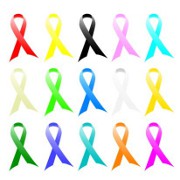 Photo: Getty Images
Photo: Getty Images
Diseases like breast cancer, diabetes and hypertension have one thing in common – they are what the medical world calls mainstream diseases. So many people are affected by these diseases that they get a lot of attention and funding for research. People campaign and do walks and drives for these conditions all the time. And that’s a very good thing.
But what about the hundreds of rare diseases that are on the opposite spectrum? What’s being done in the way of research and awareness for these uncommon diseases? Organizations like the National Organization of Rare Diseases (NORD) here in America and the European Organization for Rare Diseases (EURORODIS) located in Europe try to raise awareness of the plight of patients and the need for cures by coordinating activities worldwide motivated by this year’s slogan, “Rare but Equal.”
The fourth International Rare Disease Day, which is scheduled for Feb. 28, 2011, is promising to be even bigger and better than previous events. Why? There are national alliances involved from 25 countries (Russia, Georgia, Armenia, U.S. Canada, Australia, New Zealand, China and Japan to name a few); hundreds of patient organizations from upwards of 40 countries that will participate and plenty of events are planned to draw attention to this group.
What can you do? I know, I know. We are all stretched thin when it comes to time, energy, and to say the least, money. But take a few minutes to visit the website and read about this all-important movement. If you are moved to act or donate toward research funding, contact a well-established organization like NORD and donate in general or toward a specific disease.
A lot of rare diseases have embarrassing symptoms that prevent individuals from being so outwardly vocal about their problem. So these individuals need all the assistance they can get. How do you tell people that you stink because it’s a medical problem called trimethylaminuria and not because of lack of personal hygiene? Or how do you tell the kids at school who laugh and tease you because you look different that you have a congenital disease called ichthyosiform erythroderma and ectodermal dysplasia that affects the skin, hair, teeth and nails? These are just a couple of examples that illustrate how important research funding and finding cures are. Please visit the following websites for more information:
European Organization of Rare Disorders
http://www.eurordis.org/
National Organization of Rare Disorders – U.S.
http://rarediseases.org/
Canadian Organization for Rare Disorders
http://www.raredisorders.ca/
Resources: NORD, EURORDIS
Dita Faulkner is a freelance writer and advocate for the underprivileged.





Add a CommentComments
There are no comments yet. Be the first one and get the conversation started!